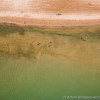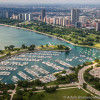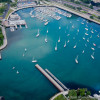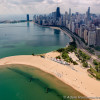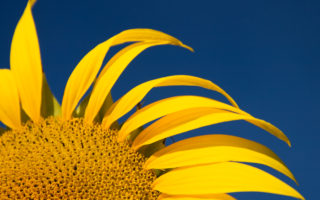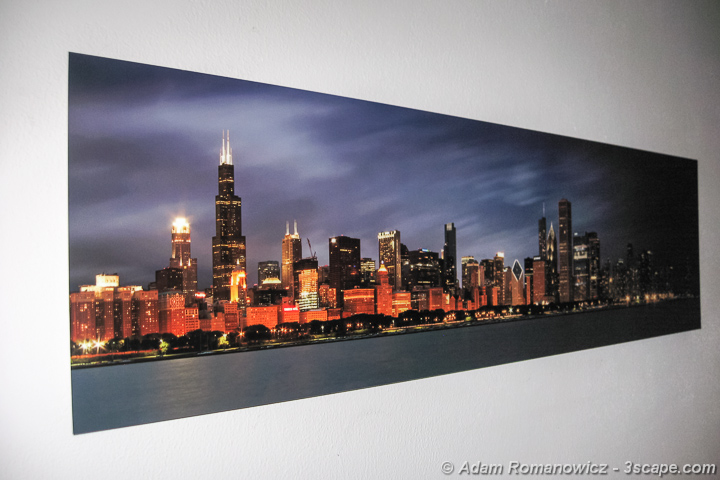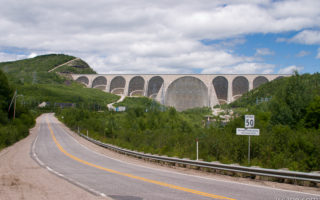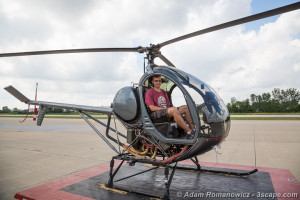
I recently had the opportunity to take a helicopter flight over the awesome skyline of downtown Chicago. I met Chris Bachman of Bachman Aero at Schaumburg Regional Airport on a beautiful, albeit hazy summer morning. Since it was nice and warm, Chris had taken the doors off the helicopter so I have unobstructed access for my aerial photography. We took off around 8am and headed east towards I-290 better known as the Eisenhower Expressway (the Ike).
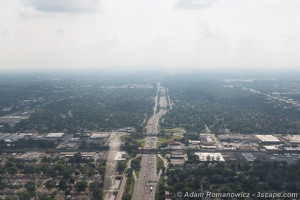
It didn’t take long for me to get that disappointed feeling in my gut, seeing the bright white haze that lay before me, shrouding the city from view. This of course, after several reschedules already due to weather. Alas, it would have to do… I’d have to make the best of this flight, if not for the photography, then at least for the thrill.
So off we went, heading east along the Ike as I happily snapped away at the sights below me. At Garfield Park we turned northeast, flying over Westinghouse College Prep, and Humboldt Park on our way to Wrigley Field, home of the Chicago Cubs.
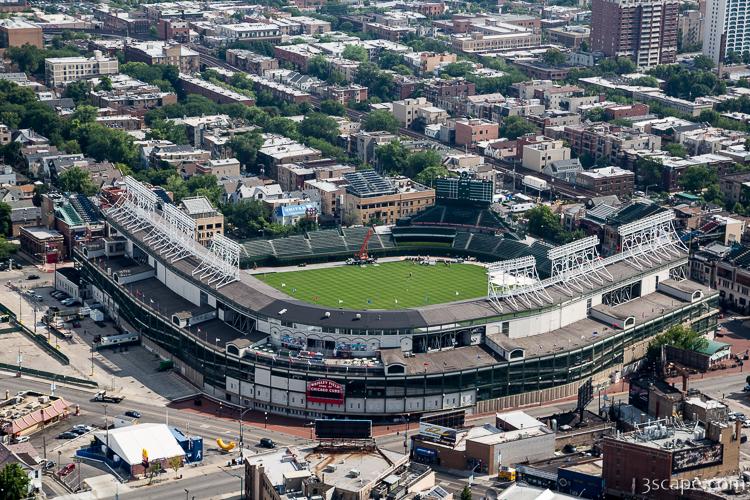


Next up: Millennium Park, the Loop, Grant Park & Buckingham Fountain, Museum Campus, and Soldier Field. So much to see!
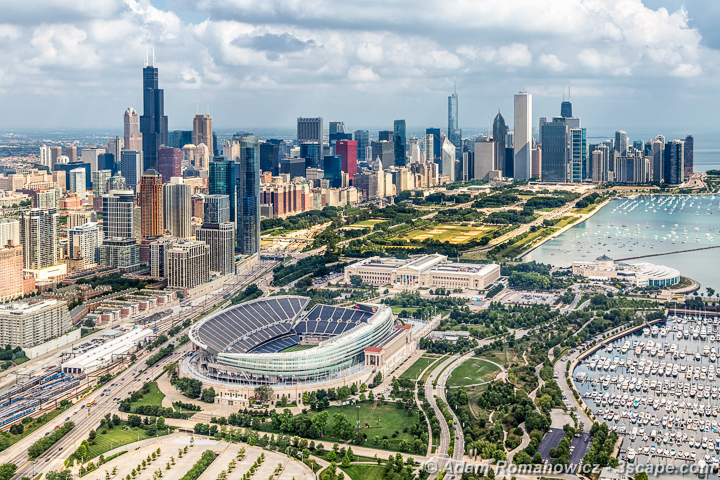
Before heading back to the home airport, we spun around over the Loop, getting a close-up view of the Willis Tower Ledge (I still call it the Sears Tower), then zipped up and down the Chicago River for some great views of the Trump Tower. Heading back to the airport wasn’t a dull ride either, as any view from the air is a great one. I had a chance to also shoot the United Center, Chicago’s “interesting” West Side, and Medinah Golf Course and Country Club.
I spent a fantastic hour or so flying around Chicago’s amazing urban scenery doing two of the things I love – flying and photography. It’s an unbelievable feeling flying over the city with the doors off a helicopter, up close and personal. For the full set of photos, please see my gallery: Chicago Aerial Photography.
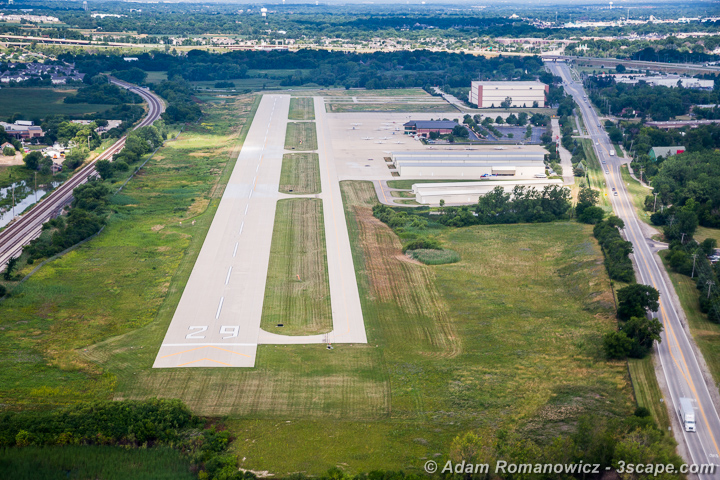
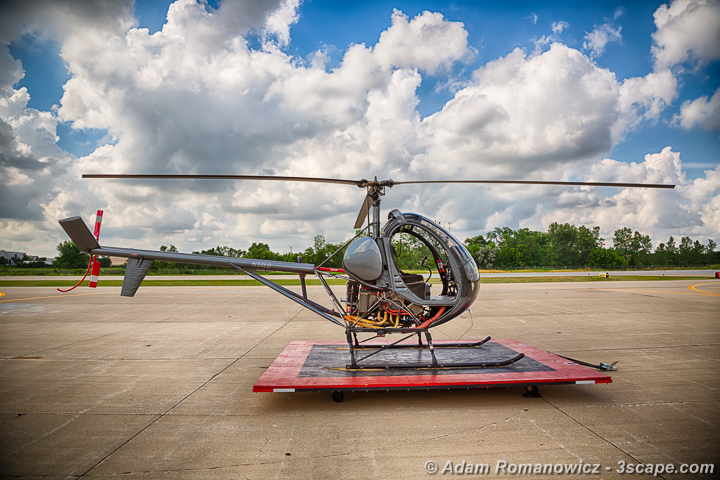
Aerial Photography Tips
So, now that I’ve inspired you and you’re itching to get in the air to do some of your own aerial photography, let me share some tips with you.
1. Plan ahead! Research the places and viewpoints that you’d like to shoot, and discuss them ahead of time with your pilot. If he’s flexible and you’re the only passenger, he should be able to get you the shots you’re hoping for.
2. Plan ahead! Yes, more planning… This time, in regards to weather. Most of the time, you’ll have to book your flight well in advance, so planning for weather isn’t always possible. Also, weather changes. As I described above, I thought I was going on a nice clear morning based on the weather forecasts, but it turned out to be hazy. Do your best to study the forecasts and conditions a few days in advance, and try to anticipate the best conditions. Around cities, haze is an unfortunate reality. Try using a circular polarizer to cut through some of the haze, and shoot with the sun behind you.
3. Time of day. As with most photography, the best time of day to shoot is early morning or evening. With the sun lower on the horizon, you’ll get more depth and texture in your images due to the shadows that the sun will cast on buildings (or rural features if you’re not in the city). Mid-day light will most certainly result in flat looking images.
4. What gear to use? I currently shoot with a Canon 5D MkIII and for this shoot I used my Canon EF24-105mm f/4L IS USM zoom lens. If you’re in a helicopter, you’ll want a good quality, medium-range zoom lens to give you the flexibility to shoot frame-filling close-ups or wide-angle scenics. Helicopters can fly lower and closer to everything, so you may not need a long zoom. If you’re in an airplane, however, then something like a Canon EF 70-200mm f/2.8L IS II USM Telephoto zoom lens may be more useful. What about a lens hood? Leave it at home! On the ground, a lens hood is handy for blocking stray light, but in a helicopter with the window open or the doors off, it’ll just be a scoop for the wind to catch. At worst, it’ll snap right off the lens and go flying.
5. How about settings? One of the big concerns with aerial photography is vibration from the engine and motion blur from flying through the air at 60-120kts. So how is it possible to get sharp images in the air? First, set your camera to Shutter Priority mode (Tv or S), and use a high shutter speed. Typically, 1/500th to 1/800th is enough to freeze motion. Depending on the brightness of the sun at the time, you’ll probably have to adjust the ISO setting as well. If you try to shoot and the aperture value starts blinking, chances are you have to bump up the ISO. 400-800 should do it, and still produce nice clean images with a camera like the Canon 5D. Point-and-shoot cameras suffer at higher ISO, so if you have to, try renting a newer Digital SLR for the shoot. The last thing that will help with vibration is Image Stabilization (IS or VR). Many better DLSR zoom lenses include this feature, so turn it on for the best results.
6. Anything else? If possible, ask if the doors can be taken off or the window opened. Shooting through glass sucks, and will result in low-contrast images, reflections, blur, and bugs! This also means it’ll be windy, so strap yourself and your gear in really well. Your pockets should be empty or zipped so nothing flies away, and no gear should be loose. Safety first! Dress appropriately, it may get chilly up there but skip the hoodie (again, wind). Lastly, if you’re prone to motion sickness, take some pills or use pressure point wrist bands.
Well, I think that’s about all for this post. I hope it was informative and enjoyable… if you’d like to know when I update my blog or post new images, please sign up for my newsletter using my signup form at the top of the page! If you have any comments, I’d love to hear from you.
